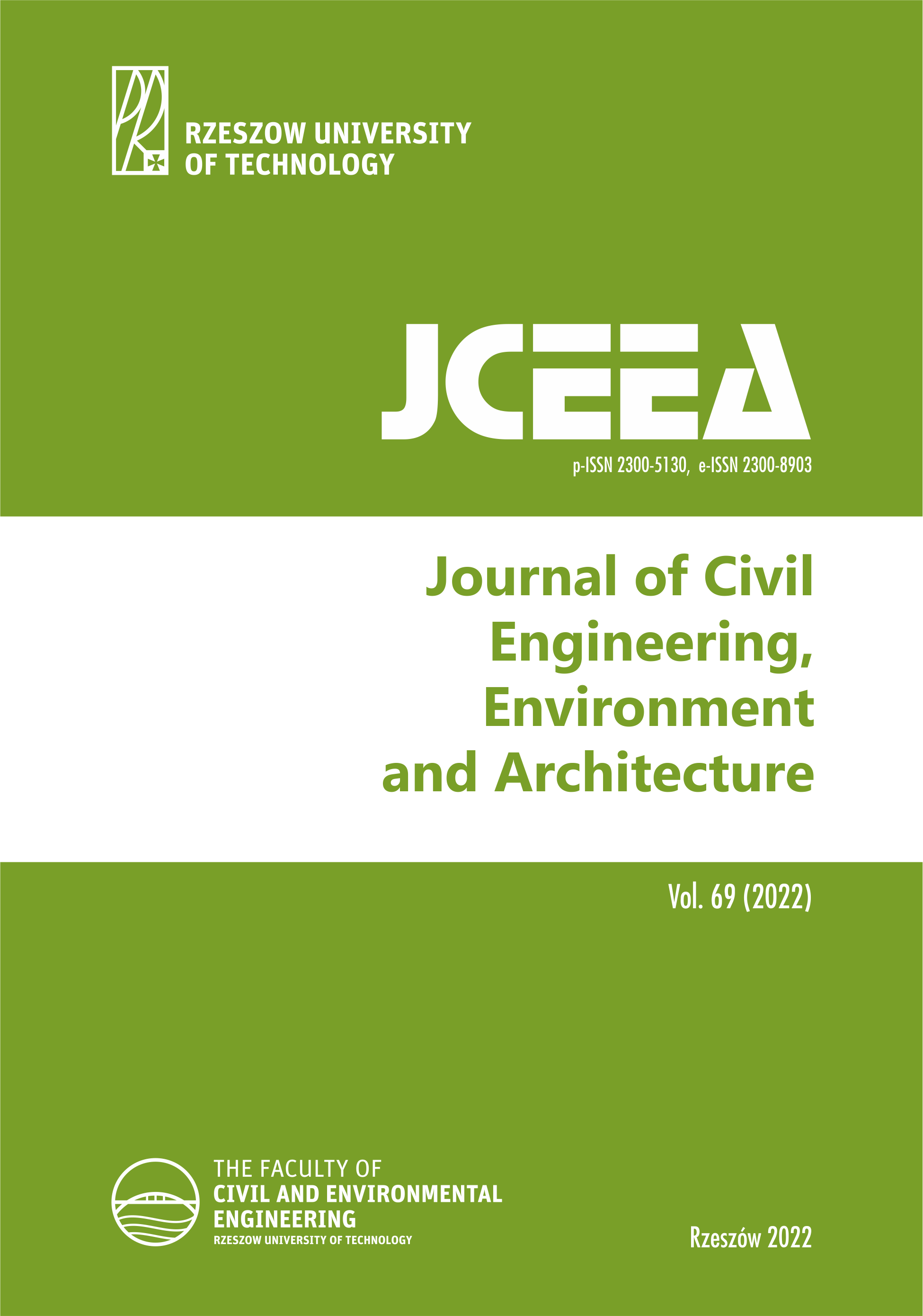Abstract
The article presents an analysis of noise in sanitary devices, and the described methods of reducing noise in places where noise occurs. The given results of noise tests of sanitary facilities and workplaces concerns one of the municipal company. Described sources of noise in water supply, sewage as well as ventilation and air conditioning systems. It has been shown that the noises occurring in residential buildings may be caused by excessively high pressure inside the installation, where, for example, when closing the valve, a water hammer phenomenon arises, causing audible noises, especially when the installation is made of metal materials. The article analyzes noise in sanitary facilities, describes the methods of reducing noise in places where noise occurs. The given results of noise tests of sanitary facilities and workplaces in one of the municipal companies of the city of the Subcarpathian province. Described sources of noise in water supply, sewage as well as ventilation and air conditioning systems. It has been shown that the noises occurring in residential buildings may be caused by excessively high pressure inside the installation, where, for example, when closing the valve, a water hammer phenomenon arises, causing audible noises, especially when the installation is made of metal materials. It has been shown that the main causes of noise in plumbing systems can be rigid pipe fittings. Noises in the sewage system are related to the outflow of used water in vertical and horizontal sections. The phenomenon most often occurs in places connecting vertical pipes with horizontal pipes, as well as the use of too small diameters of pipes. Material noise reduction in sewage systems can be ensured thanks to a properly designed system of fastening pipes to fixed elements. An important step is to use appropriate sound insulation to stop unwanted sounds. The reason for noise in the air-conditioning and ventilation system are changes in the velocity of the flowing air mass and the occurrence of turbulences during the change of the air flow direction. This causes the ducts to resonate and the air flow noise through the diffusers. The most common noise problem in the central heating installation is the use of a solid fuel boiler, the maintenance work of the device is a problem, as it requires cleaning the furnace, which is related to the noise that is transmitted through the installation pipes to the rooms. Based on the analysis of workstations at the municipal company plant, it has been shown that the highest conformity deviation level is in the drying room in the position of a machine and device operator
References
Yang, H.-S., Cho, H.-M., & Kim, M.-J. (2016). Field Measurements of Water Supply and Drainage Noise in the Bathrooms of Korea’s Multi-Residential Buildings. Applied Sciences 6, 372.
Fuchs, H.V. (1983). Generation and control of noise in water supply installations: Part 1: Fundamental aspects. Applied Acoustics, 16, 325–346.
Fuchs, H.F. (1983).Generation and control of noise in water supply installations. Part 2: Sound source mechanisms. Applied Acoustics, 38, 59–85.
Jeon, J.Y., Jo, H.I., Kim, S.M., & Yang, H.S. (2019). Subjective and objective evaluation of water-supply and drainage noises in apartment buildings by using a head-mounted display. Applied Acoustics, 148, 289–299.
Ryu, J., & Song, H. (2019), Comparison between single-number quantities for rating noises from sanitary installations in residential buildings by objective and subjective methods. Building and Environment, 164, 106378.
Şentop Dümen, A., & Tamer Bayazıt, N. (2020). Enforcement of acoustic performance assessment in residential buildings and occupant satisfaction. Building Research and Information, 48, 866–885.
Van Houten, J.J. (1994). Noise control in plumbing systems, in: C.M. Harris (Ed.), NoiseControl in Buildings, McGrawHill.
Ji, W., Yang, H.,Cho, H., & M. Kim. (2015). A study on the evaluation indices of water supply and drainage noise in the bathroom of residential buildings, In Proceedings of the 9th Conference of Korean Institute of Architectural Sustainable Environment and Building Systems, Mokpo, Korea, 112–113.
Kalda, G. (2020). Protection against noise. Rzeszów University of Technology Publishing House, Rzeszów 2020. [in Polish].
PN-B-02151-2:2018-01. Building acoustics. Noise protection in buildings. Part 2: Requirements for acceptable indoor sound levels.
Aero7 Air conditioning volume: https://www.aero7.pl/poradnik/jak-glosno-moze-pracowac-klimatyzacja. [in Polish].
Main Inspectorate for Environmental Protection. Noise monitoring, 2020. [in Polish].
Municipal Water and Sewerage Company in Rzeszów. Register of factors harmful to health at workplaces, 2020. [in Polish].
PN N-01307:1994. Noise - Admissible Sound Levels at Work Places - Requirements Relative to Measurements.
PN-EN ISO ISO 9612:2009. Acoustics. Determination of occupational noise exposure. Engineering method.

